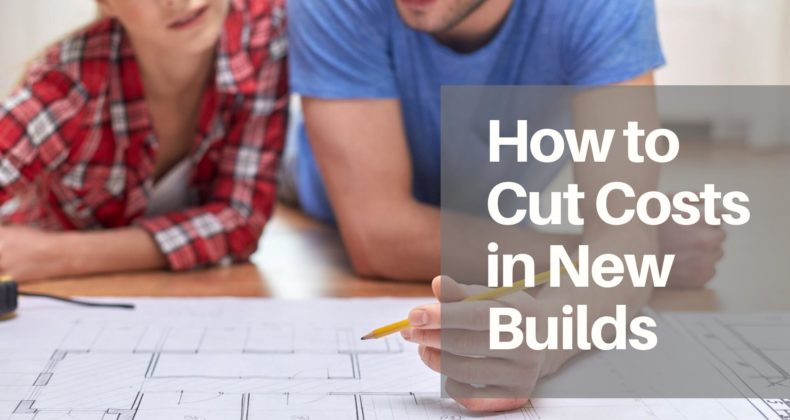Building a new home can be one of the most exciting and rewarding things you ever do. After all, this is your chance to build a house around your personal tastes and style of living. You get to make all the choices, and you don’t have to live with anyone else’s questionable design choices. But, as many contractors (and homeowners) will tell you, when you’re building your dream home, new build costs can spiral out of control quickly if you don’t pay attention.
That’s why we’ve put together a list of our “pro tips" to help you learn how to save time and money in your new build. We have tips on ways to save money, how to focus on the features you love, and how to decide when and how to DIY it.
Whether your new build budget is $100,000 or $1,000,000, you’ll find it’s amazingly easy to blow the budget. But with a little planning, care, and attention, you’ll also find there are dozens of ways to cut costs without sacrificing quality.
List Your Priorities
Make sure you know what’s important to you. Make a list of the things you really want in a new home and think about what you’re willing to give up to save money.
Create a list of your priorities before you talk to a builder or start shopping floor plans. After all, a new home will require thousands of decisions. Some will be worth the money, and some won’t be. So, make sure you’re able to defend your favorite features and be ready to let go of unimportant things. When you know what you want to splurge on, and where you want to economize, you’ll find you’re able to make compromises and changes quickly and confidently.
For example, outdoor kitchens are a popular feature in Florida and are sometimes one of the main features of your new home. This feature can cost thousands of extra dollars, so if you actually hate spending time in the heat, you may want to eliminate that feature if the budget is tight. Or you may find that three bedrooms are the home builder’s standard layout. But if you only need two bedrooms, but want a bigger bathroom, it may be easy to accommodate your wishes without much fuss.
Without priorities, some homeowners find they overspend on fixtures and finishes they don’t notice or care about. If you eat out every night, why pay for fancy appliances? If you only take showers, why pay for a big bathtub?
When you define your priorities, you also make it easier to stand firm on the items you do want. If a dreamy, walk-in closet is one of the reasons you’re building a new home, don’t let your builder talk you out of it. If the spacious laundry room is a must-have, you may have to give up a hall closet to get it. Want a three-car garage? You may need to give up that home office. The goal is to spend on the things that are important to you and be ready to economize in other places.
Consider a Smaller Footprint
One of the most effective ways to save money is to build a smaller house. While larger houses are popular, they cost most to build, and they require more to maintain. While few people are surprised to find out that bigger homes cost more, some are surprised to find out that a 5,000-square-foot home with seven rooms can cost more than twice as much as a 2,500-square-foot home with seven rooms. While opting for a smaller home may seem like a huge compromise, it may allow you to spend in other ways.
For example, if you’re planning to spend $3,000 on ten doors, and you downsize, you may find you only need seven doors, so you can splurge on better doors or include arched doorways. If you choose a two-car garage over a three-car garage, you may be able to choose a more exciting garage door or add a paver driveway.
Open Footprints Save Money
One of the reasons open footprints are so popular today is that they are a cost-efficient way to build homes, which means you can get more home for less money. When building houses, walls filled with plumbing and wiring cost more. Every window and door you install will require more measuring, labor, and trim work (not to mention increased materials costs.)
Fewer walls and doors mean lower costs. Open floor plans translate into more straightforward wiring, streamlined plumbing, and less carpentry. Open floor plans also give contractors more space to do work, so things like carpet installations and painting can get done faster (and less expensively) since they are dealing with fewer corners, thresholds, or closets.
Open floor plans also allow you to be more flexible in the way you live. A kitchen with an island opening up into a living room can be used for cooking, dining, office work, entertaining, and more. Space dedicated to each activity can change as your life changes over the years. Without walls and doors, dining rooms can get bigger or smaller, or disappear altogether, depending on your lifestyle.
Keep it Simple
When it comes to saving on construction costs, less is more. Modern, clean homes with simple finishes are attractive, exciting, and budget-friendly. In addition to looking fantastic, today’s clean, simple building finishes are readily available, easy to install, and easy to care for.
Simple, modern cabinetry is a great example. Flat-faced cabinets look crisp, are easy to clean, and can even be ordered without any cabinet fixtures. You can pocket that extra money or funnel those extra dollars into the gas range of your dreams.
Don’t Forget About Tax Credits
Tax credits exist for a wide range of materials and building methods. With just a few changes to your building plans, you may qualify for home improvement or energy-efficiency tax credits or rebates. In some cases, purchasing energy-efficient appliances or building materials can make you eligible for tax credits.
Look for Rebates
Even if you’re one of those people who usually ignore rebate offers, this is the time to pay attention. When you’re shopping for a lot of big-ticket items, choosing the ones that offer rebates can really add up, sometimes into the thousands of dollars. Everything from dryers to thermostats to smart doorbells may offer rebates, so keep your eyes open.

Splurge Selectively
When you’re building a home, it’s easy to focus on saving money right now. Don’t forget to consider how your choices are going to affect the cost of your home long-term. You may think a cheaper HAVC system makes sense now, but if it’s not as energy-efficient, or doesn’t last as long, it may actually cost you more money in the long run. The same goes for things like appliances, insulation, roofing, siding, and grading the landscape. Instead of automatically choosing the cheapest option, carefully weigh the pros and cons of each choice, and think about the long-term implications of your decisions.
Some splurges will be less practical. It may be your dream to have a great front door, a three-car garage, or a killer lanai. How will those choices fit into your life long-term? Will they make sense when you have kids? Retire? Do they add to the resell value? While splurging can feel fun right now, make sure it’s an investment you’ll continue to enjoy for years to come.
Space Out Replacements and Warranties
Many new homeowners don’t think about the timing of warranties. Many standard warranties last ten years, so when that decade is up, they find that appliance after appliance is breaking down, roofs start leaking, and the water heater stops working, all at once.
Instead of being financially crushed as dozens of home products come to the end of their life, plan your home purchases in ways that provide a manageable replacement schedule. Invest in a 40-year roof. Get the extended 20-year warranty on windows. Choose some appliances with 10-year warranties, but with others, look for 15- or 20-year warranties. With a little extra time and money now, you can avoid ruinous replacement expenses down the road.
Select a Contractor Wisely
No matter how much you do or don’t want to spend, you won’t be able to manage your budget effectively without a competent contractor on your side. When you find the right contractor, they’ll listen to your ideas, but also be able to recommend options or solutions you haven’t considered.

If staying within budget is essential to you, make sure you’re comfortable discussing spending and cost-saving measures with your builders. And make sure they understand your desire to keep within budget.
Once you’ve found a contractor or builder that you’re happy with, ask for references. And then call the references and really talk to them. Ask them lots of questions and find out how the contractor dealt with budgets and challenges. Ask if they were able to complete on time and within budget. If not, find out why.
Allow for Some Wiggle Room
In any home build, unexpected issues arise that may increase the cost of the project. When overages happen, make sure you understand the problems and are able to think about ways to reduce costs in other areas.
Another strategy is to aim for a budget that is 20 percent below what you can actually spend. Build your new home based on that lower budget. If you end up coming in within the lower budget number, you can spend the windfall on furnishing your home or extra landscaping. But if you have costly delays, you have financial room to deal with the additional expense.
Final Word
When constructing your home, it’s wise to be frugal, but remember this is your dream home. Spend on the things that are important to you. Skimp on the areas you don’t care about. And remember that this will be the building you will live in for years to come. Make it a space that makes you happy, feels comfortable, and works with the way you and your family live now and in the future. Of course, it’s smart to watch construction costs, but you don’t cut corners in ways that might diminish your long-term quality of life.
Beattie Development helps Southwest Floridians build or remodel the home of their dreams. If you want to find out more about any of our custom homes or premier remodeling services, please contact us today.






